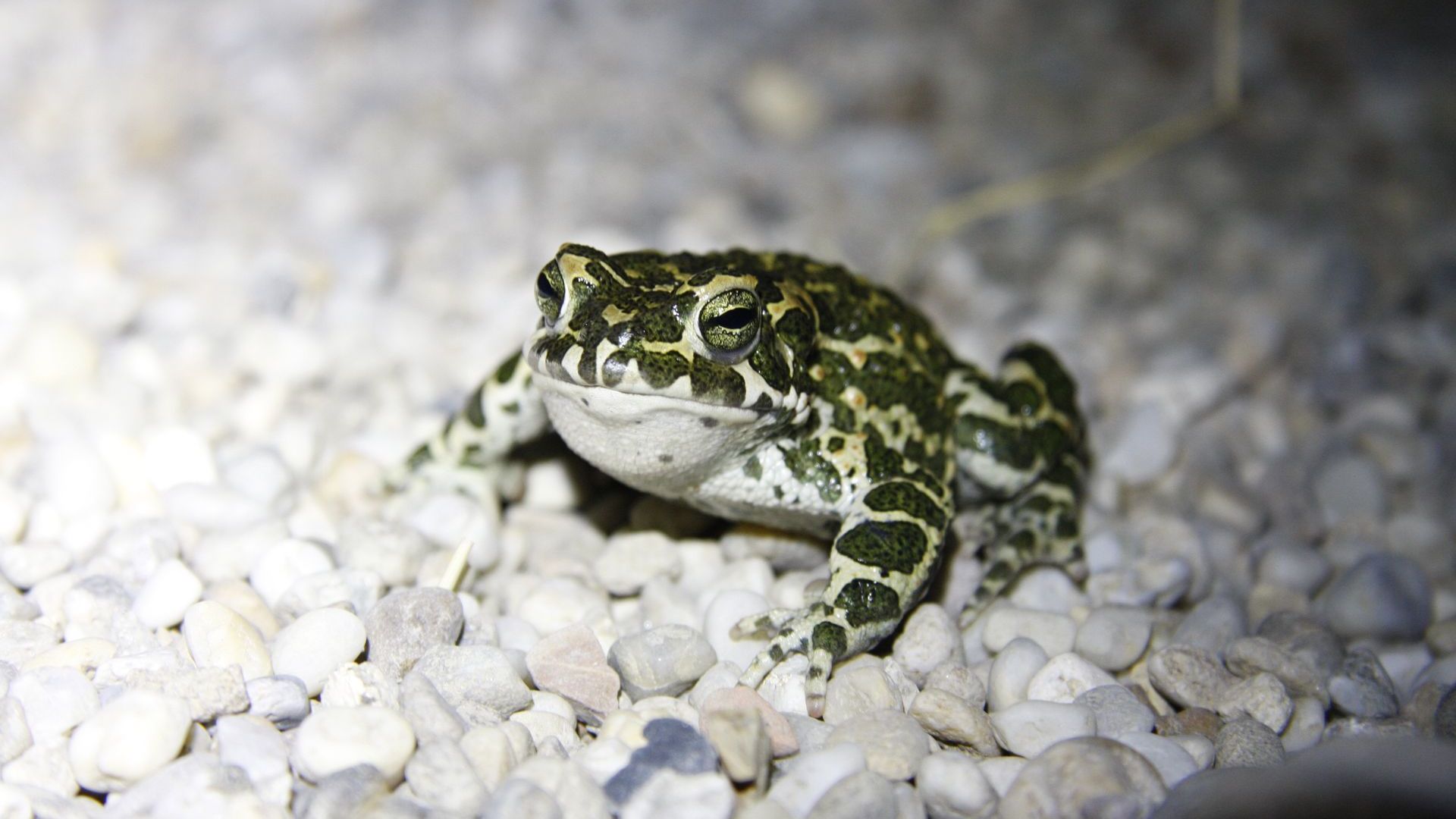The Green toad is endangered throughout Europe and is often under protection.
Description
The Green toad is a medium-sized (up to 9 cm) toad species. It is easily recognizable by its distinctive pattern, consisting of green spots on a whitish to brownish background. The iris of the eyes is golden-green. Sometimes the animals have reddish-tipped warts on the parotid glands and on the sides of the body. This is often more pronounced in females. During the mating season (April – July), males often have less contrasting markings, and dark swellings (calluses) on the first three fingers of the forelegs. The latter, together with their more developed forelimbs, are used to hold on to the females. During the mating season, the males produce trilling mating calls while sitting in the water (similar to those of a mole cricket).
Wikimedia Commons Licence Mnolf CC BY-SA 3.0 Unported
Distribution
The Green toad has a wide distribution worldwide, stretching from the Rhine in the west to the Ural Mountains in the east and from the Balkans in the south to the Baltic States in the north. Austria lies at the western limit of this species' distribution. There, the distribution is mainly concentrated in eastern Austria (Burgenland, Vienna, Lower Austria). In the rest of the country, Green toads only occur in isolated populations, often in urban areas (e.g. Linz, Klagenfurt, Innsbruck).
Habitat
The Green toad is a pioneer species that quickly colonizes dynamic and recently created bodies of water. It is found in dry, steppe habitats in the majority of its distribution area and requires sun-exposed waters for reproduction. It also colonizes highly dynamic natural river floodplains. However, the Green toad has also historically benefited from human structures such as quarries, gravel and brick pits, as well as cattle troughs, and has used these for breeding. As natural habitats are becoming rarer due to construction and river regulation, Green toads are now almost exclusively found in such artificially created structures. Parks (with ponds) are also often used in urban areas.
Annual activity
Green toads leave their winter refuges in early to mid-March and begin their migration to the breeding sites. The reproductive phase begins at the end of March - beginning of April and males start calling in the waters. During mating, the male clings to the female's armpits and thus to her back. In this position (amplexus), the female releases the spawn into the water while the male fertilizes it. From July onwards, activity shifts increasingly to the land habitat. At the end of October, they seek out their winter refuges, where they spend the winter.

 DE
DE  EN
EN 









